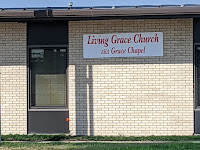| Tolbooth Kirk (Stock photo) |
 |
| Cold Town House Pub (Robertson Memorial Church) |
 |
| St Andrews + St. George's West |
 |
| Westminster Abby |
order to enhance their vocational and social skills. Undercroft Cafe at St Andrews and St George's West in Edinburgh and Cafe Ness in conjunction with Inverness Cathedral, dedicated to St Andrew in Inverness are examples of repurposing existing structures to enhance the human condition both as patrons and employees. This concept may honor the original intention of a congregation more practically than a stone structure attempting to survive by the donation of tourists. While understanding the original development of grand structures weaving together the political, religious, and artistic realms in order to establish power over others, I greatly appreciate those institution which can serve a practical, day-to-day purpose for everyone.
In my four decades of pastoral ministry only once have I been part of a congregation's closing. I doubt those who founded and built church structures thought congregations go through life cycles. The Gothic and Victorian structures, as well as the wood framed rural buildings were meant (at least in theory) to last forever. As congregations close, one positive asset is the large and functional kitchen which grace many buildings in the area I serve. The kitchens, as well as the ability to easily renovate have enhanced the viability to sell the structure as a residence. It is appropriate that a "House of God" can be transformed to a dwelling where individuals or families can gather and enhance their lives.
 |
| Congregation in Fargo warehouse area |
We all need a place to gather. We gain insight, build community, and find support from others who share a common purpose. From grand cathedrals, to strip mall structures, to pubs, to used book stores, the opportunity to be strengthened by a "Power Greater than Ourselves" will remain a part of human existence.
